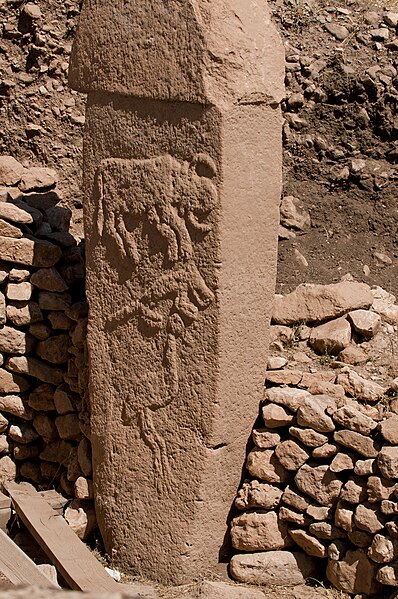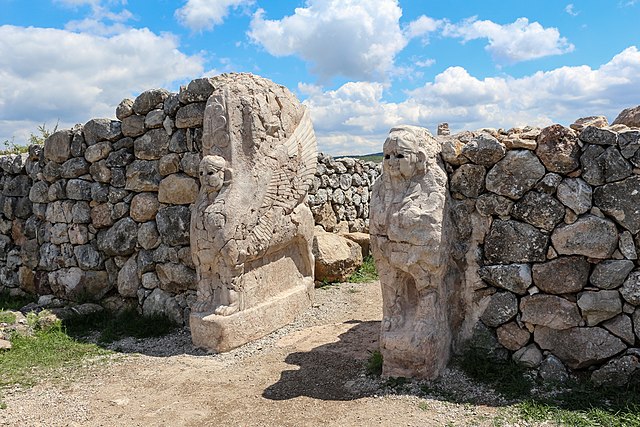The prehistory of Anatolia stretches from the Paleolithic era through to the appearance of classical civilisation in the middle of the 1st millennium BC. It is generally regarded as being divided into three ages reflecting the dominant materials used for the making of domestic implements and weapons: Stone Age, Bronze Age and Iron Age. The term Copper Age (Chalcolithic) is used to denote the period straddling the stone and Bronze Ages.
Göbekli Tepe site (1)
Pillar 2 from Enclosure A (Layer III) with low reliefs of what are believed to be a bull, fox, and crane.
Pillar 27 from Enclosure C (Layer III) with the sculpture of a predatory animal
Pillar with the sculpture of a fox
Turkey, officially the Republic of Türkiye, is a country mainly in Anatolia in West Asia, with a smaller part called East Thrace in Southeast Europe. It borders the Black Sea to the north; Georgia, Armenia, Azerbaijan, and Iran to the east; Iraq, Syria, and the Mediterranean Sea to the south; and the Aegean Sea, Greece, and Bulgaria to the west. Turkey is home to over 85 million people; most are ethnic Turks, while ethnic Kurds are the largest ethnic minority. Officially a secular state, Turkey has a Muslim-majority population. Ankara is Turkey's capital and second-largest city; Istanbul is its largest city, and its economic and financial center, as well as the largest city in Europe. Other major cities include İzmir, Bursa and Antalya.
Some henges at Göbekli Tepe were erected as far back as 9600 BC, predating those of Stonehenge by over seven millennia.
The Sphinx Gate of Hattusa, the capital of the Hittites
The Temple of Zeus in the ancient city of Aizanoi in Phrygia
The Sebasteion of Aphrodisias, a city named after Aphrodite, the Greek goddess of beauty. In 2017, it was inscribed on the UNESCO World Heritage Site list.








